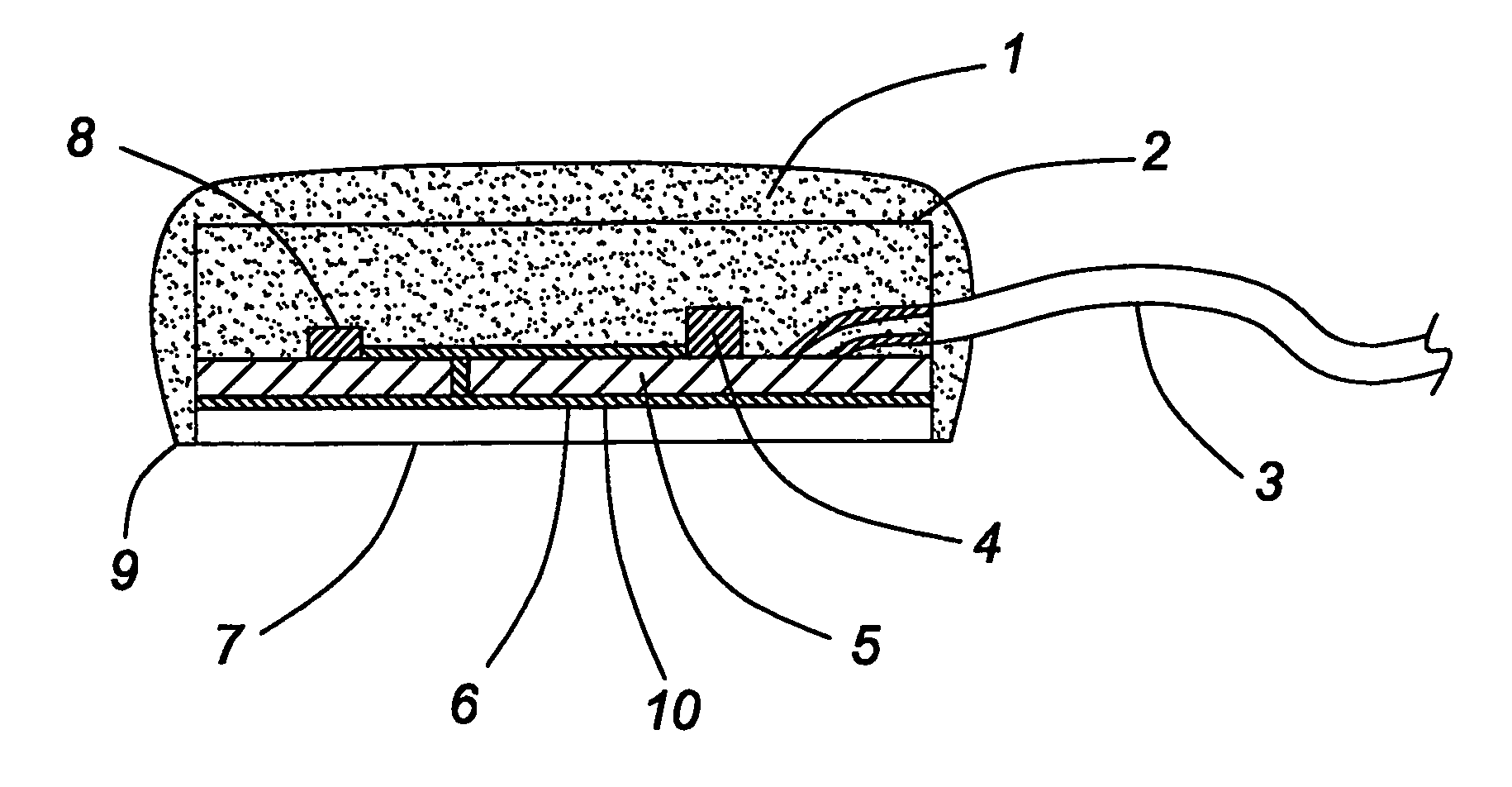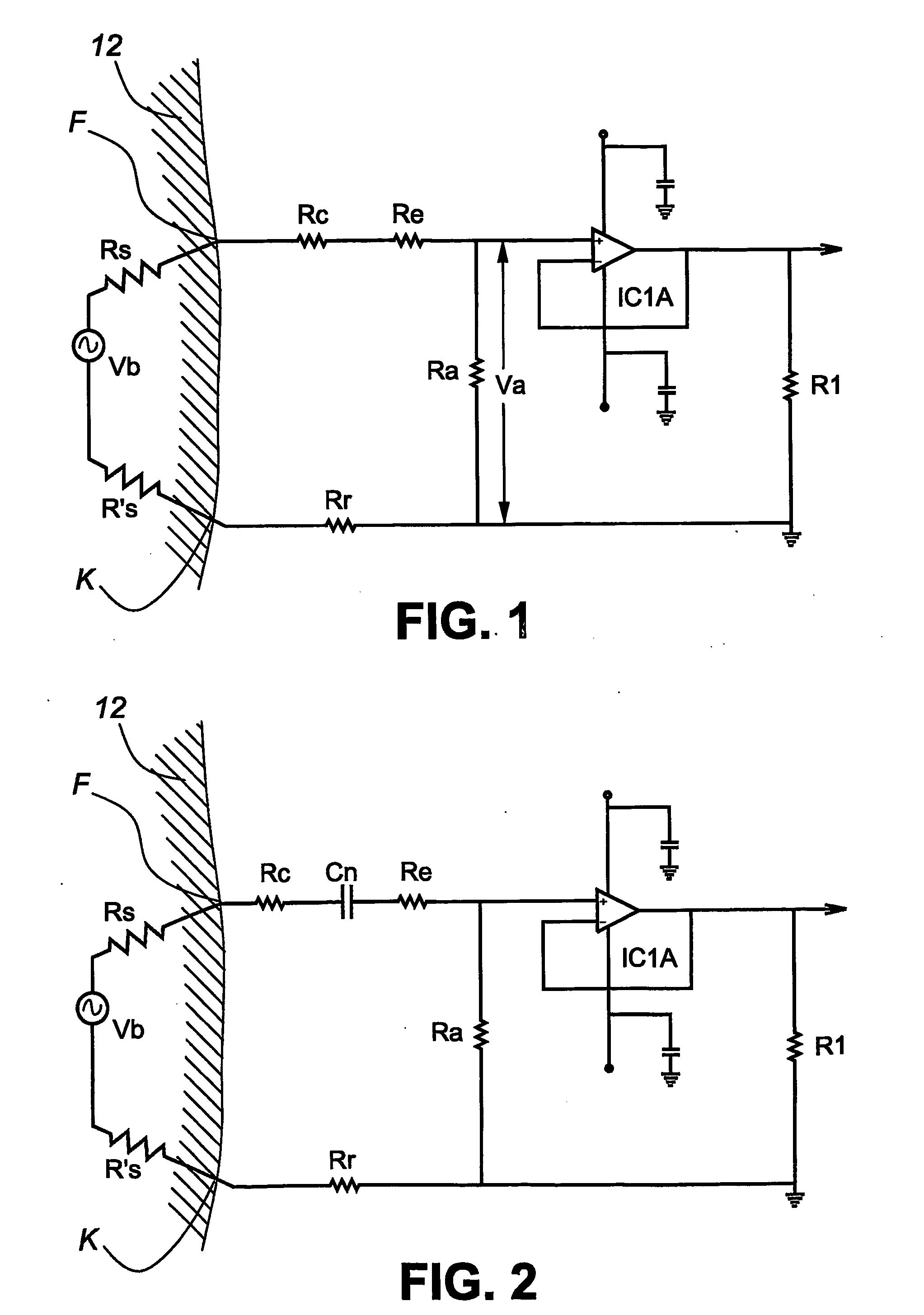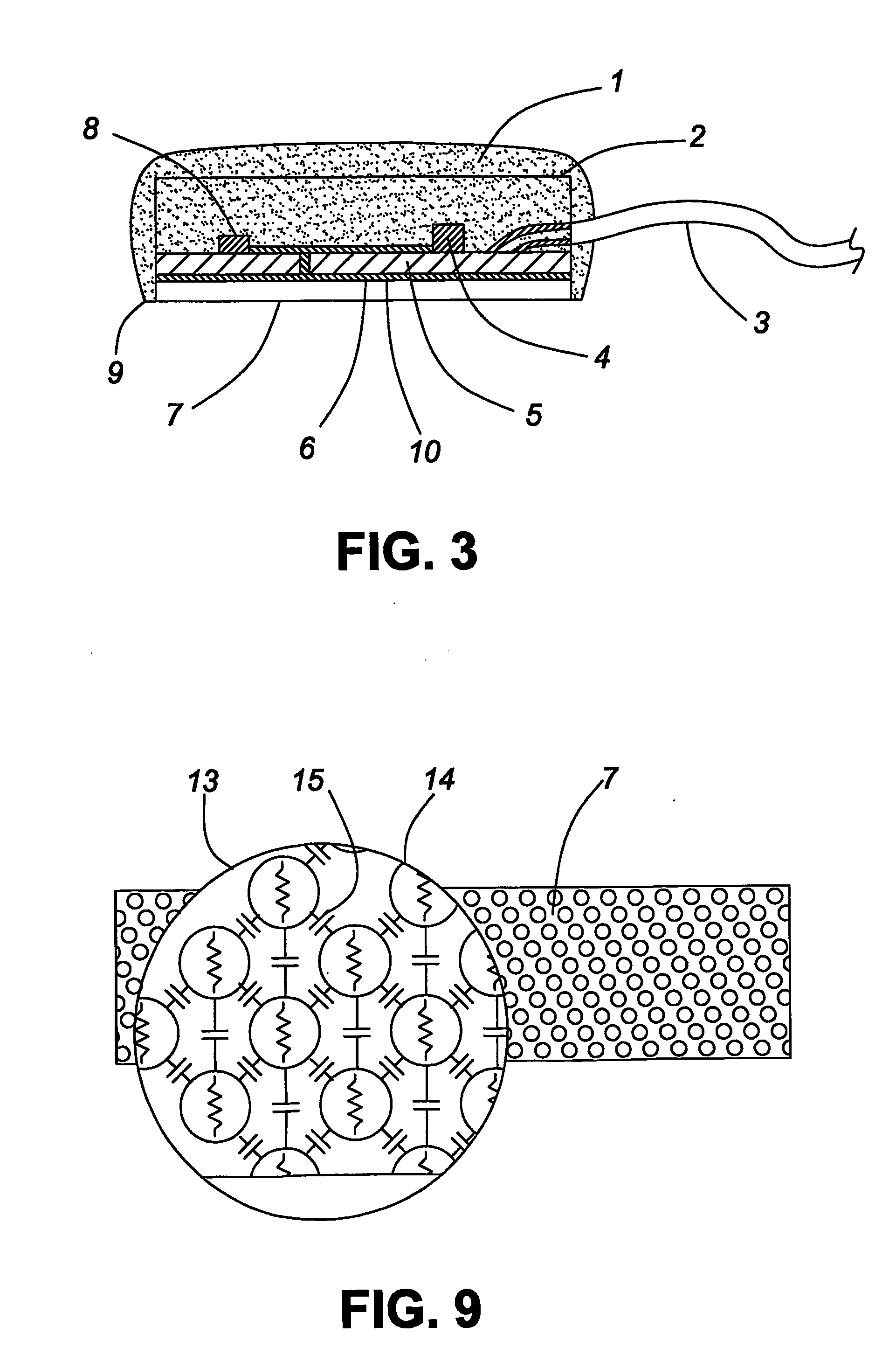Skin impedance matched biopotential electrode
a biopotential electrode and skin impedance technology, applied in the field of sensing voltage potentials, can solve the problems of lower level of electrolytic contact noise, achieve the effect of reducing the imbalancing effect of skin rs and contact rc resistance, high input impedance and low output impedan
- Summary
- Abstract
- Description
- Claims
- Application Information
AI Technical Summary
Benefits of technology
Problems solved by technology
Method used
Image
Examples
Embodiment Construction
[0079]FIG. 1 depicts a pictorial schematic layout for the electrical circuit of the invention, when analyzed in terms of DC currents, before taking into consideration polarization noise effects.
[0080] All pickup electrodes are used to convey signals originating inside a body 12 to an external reading device such as an ECG machine or heart rate counter through a closed circuit which provides a voltage divider network. The electrical signal inside the body can be called the body-source, as represented by a voltage Vb. Analyzing this circuit for its DC characteristics, the body source, along with the voltage divider required for the pickup of the bio-signal is illustrated in FIG. 1 wherein: [0081] Rs and R's are the skin resistance; [0082] F is the location of the body-to-electrode interface; [0083] Rc is the contact resistance at the interface F; [0084] Re is the electrode bulk resistance, and [0085] Ra is the resistance across which the output signal Va is measured.
[0086] The end o...
PUM
 Login to View More
Login to View More Abstract
Description
Claims
Application Information
 Login to View More
Login to View More - R&D
- Intellectual Property
- Life Sciences
- Materials
- Tech Scout
- Unparalleled Data Quality
- Higher Quality Content
- 60% Fewer Hallucinations
Browse by: Latest US Patents, China's latest patents, Technical Efficacy Thesaurus, Application Domain, Technology Topic, Popular Technical Reports.
© 2025 PatSnap. All rights reserved.Legal|Privacy policy|Modern Slavery Act Transparency Statement|Sitemap|About US| Contact US: help@patsnap.com



